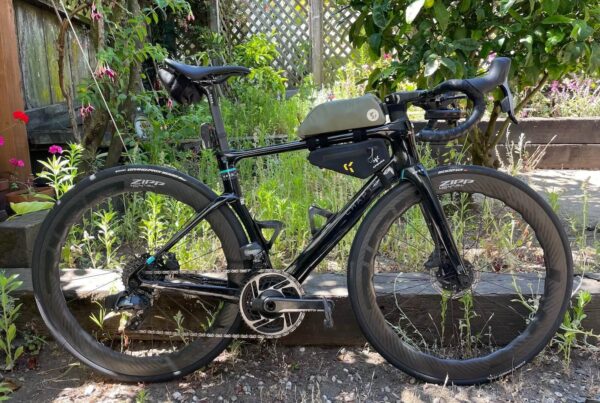Idaho’s stop-as-yield statute lets you ride safely and efficiently—without breaking the law.
For 26 years, cyclists in Idaho have rolled through stop signs—legally. According to that state’s law, when a cyclist approaches an intersection controlled by a stop sign, the cyclist must slow to “a reasonable speed,” but is not obligated to stop unless doing so is “required for safety.” After yielding to any vehicle that has the right of way, the cyclist may proceed. There’s more: Cyclists are required to stop at red lights, but once stopped may then proceed without waiting for the light to change, after first yielding to vehicles that have the right of way. In effect, this law allows cyclists to treat stop signs as yield signs, and red lights as stop signs.
To many cyclists in other states, the Idaho law sounds like a dream come true. It legalizes what many riders already do in practice: roll safely through intersections, treating stops as yields and lights as stops. Furthermore, Idaho’s quarter-century of experience shows that the law works: There has been no uptick in cycling accidents in Idaho. So if “stop as yield” is safe, why not make it legal in other states? After all, shouldn’t traffic rules serve some purpose beyond simply ordering compliance with the law?
Traffic signs and signals came into existence only after 1914, and for one reason—to facilitate the flow of auto traffic. Stop signs do little to enhance cyclist safety; in fact, they reduce it by requiring cyclists to enter the intersection after a stop, with no momentum, which makes them less stable and poorly positioned to execute evasive maneuvers, if necessary.
In the rest of the country, cyclists face a three-way choice between safety, efficiency and legality, and can have only two of the three. For safety, many cyclists ride the less-traveled side streets, but then must choose between efficiency—rolling through the numerous stop signs on side streets—or legality.
Conversely, cyclists prioritizing efficiency and legality sacrifice the safety of the side streets. Stop-as-yield laws make safety and efficiency legal.
With these points in mind, legislators introduced stop-as-yield bills this year in Arizona, Montana, Oregon and Minnesota. In Oregon, cycling attorney Ray Thomas led the effort; I was pleased to testify with Ray before the House Transportation Committee. Sadly, there were not enough votes to move the bill out of committee, and efforts in the other states also died in committee.
But this issue is not going away—in fact, it’s building momentum. Oregon considered a similar bill in 2007, as did Minnesota in 2008, and cycling advocates in California were debating whether to push for legislation last year. Oregon’s proponents promise to revisit the issue when the legislature reconvenes, in 2011. The stop-as-yield debate promises to remain heated, though, with motorists adamantly opposed, often due to a perception that cyclists are seeking special rights, and even cyclists are divided on the issue.
After careful consideration, I think that stop-as-yield is a good law. It would make most cyclists obey the law at intersections. Perhaps more important, it could help foster a spirit of more respect for the law. If it becomes commonplace for cyclists to follow the law, and unacceptable within our culture to disregard it, then public perception of cyclists would vastly improve. At the same time, law-enforcement officers would be able to focus their attention where it belongs—on unsafe cyclists and motorists. VisitBICYCLING.com/stopasyield to read the law and learn what you can do to raise the issue in your state.
Research and drafting by Rick Bernardi, J. D.
This article, A Stop-Sign Solution?, was originally published on Bicycling on July 28, 2009.



